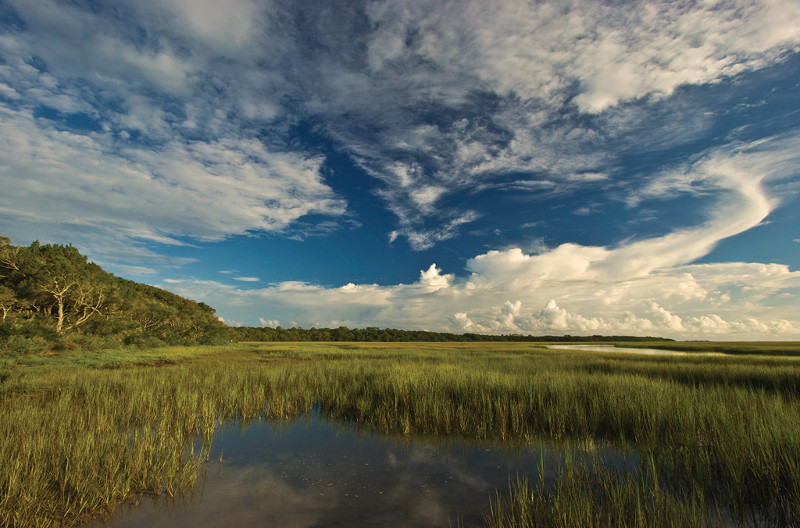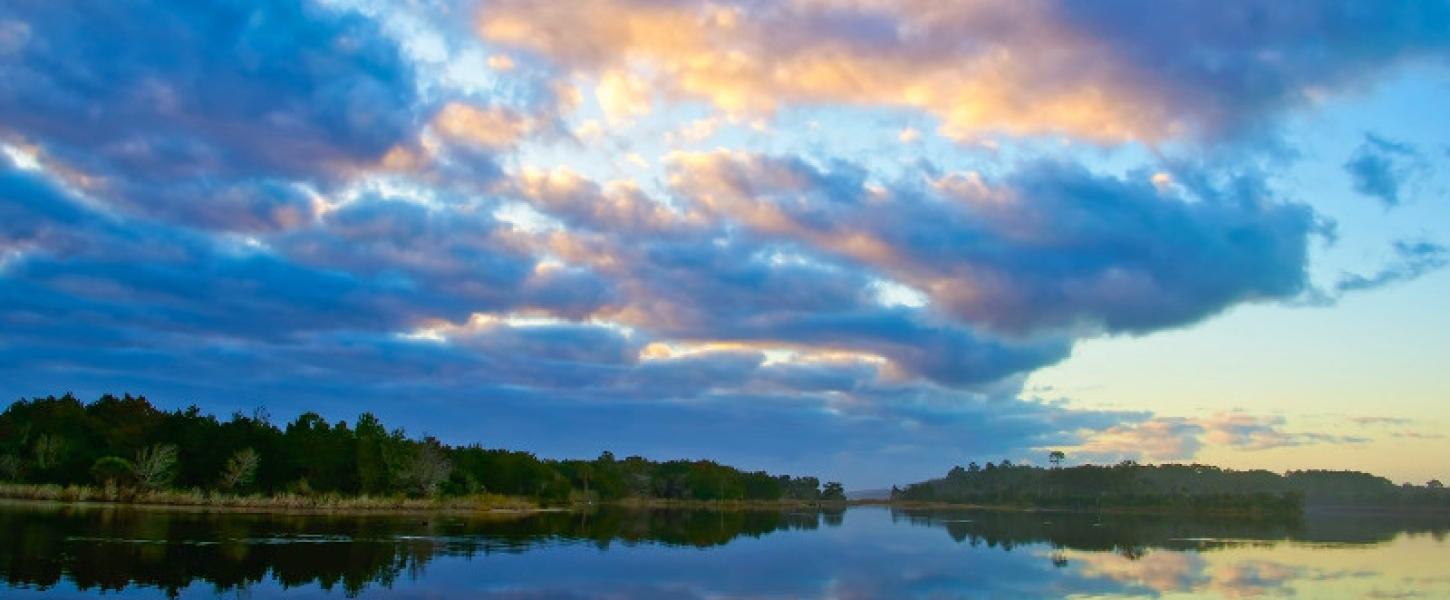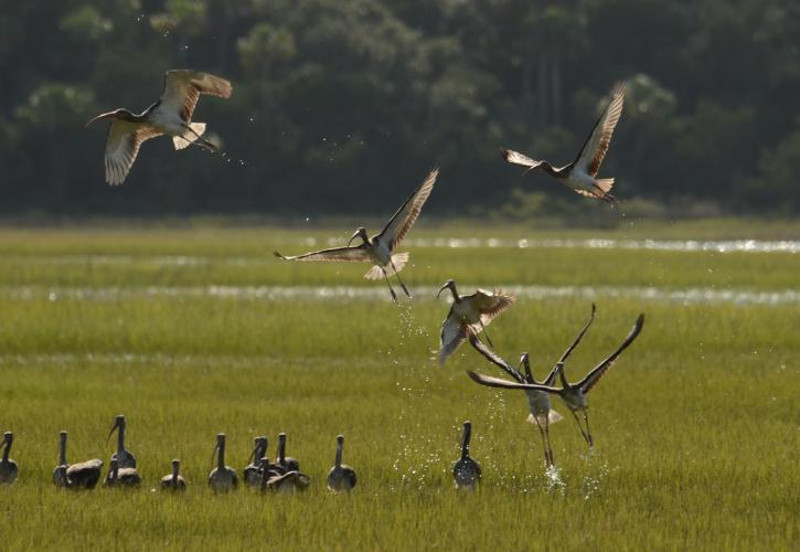
The Salt Marsh

Neither land nor sea, the vast salt marsh grasslands that hug the west sides of barrier islands like Big Talbot Island State Park are some of the most ecologically productive and important areas on the planet. These tidal flats are located at the confluence of freshwater river mouths draining from inland and the salty waters of the Atlantic Ocean. This mix of fresh and salt water, also known as estuarine or brackish, creates an incredibly nutrient-rich environment that supports a diversity of life.
The organic biomass of plants and animals work in harmony to pump out vital oxygen, filter out contaminants and trap sediments to build more marsh. The dense marsh muck provides an anchor for plants that give structure to the underwater environment, providing hiding places for young marine life as they seek out morsels delivered by the rich currents of the rivers and the tides. These expansive grasslands further serve to protect surrounding uplands during storm events, acting like a giant sponge and soaking up the flood waters and reducing much of the destructive surge impacts from penetrating too far inland.

The marsh's cast of characters is complex. Saltmarsh cordgrass (Spartina alterniflora) and black needlerush (Juncas nigra) are the workhorses of the plant community. Organized by nuanced differences in elevation that affect how often tidewaters reach their roots, these plants occupy distinct roles in the grasslands.
Uniquely adapted to withstand extra salty conditions, cordgrass dominates the low-lying and regularly inundated areas that comprise most of the landscape. Twice a month during the peak tide heights at the new and full moons, salt water may intrude the upper borders of the marsh that the needlerush prefers.

Animals capitalize on all aspects of these regions. Invertebrates burrow in the mud and eat algae off of plant roots. Some, including oysters, are filter feeders, opening their protective outer shells when submerged to dine on passing detritus and bacteria, simultaneously cleaning the waters as they dine. Small reptiles, larger fish, probing birds and fish graze the invertebrates and detritus that flows throughout.
Larger birds like herons and egrets and small mammals like raccoons and bobcats feast on the buffet of tasty young fish, shellfish, reptiles and birds. Even migrating wildlife benefits from the salt marsh, using it as a pit stop to fuel up on long journeys to and from breeding grounds.
Salt marshes are the living and breathing epicenters of Florida's ecosystem. Hundreds of species, including us, depend on their ecological diversity and functions to fuel life in this region. We hope to protect these unique and vital places into the future at Big Talbot Island State Park.